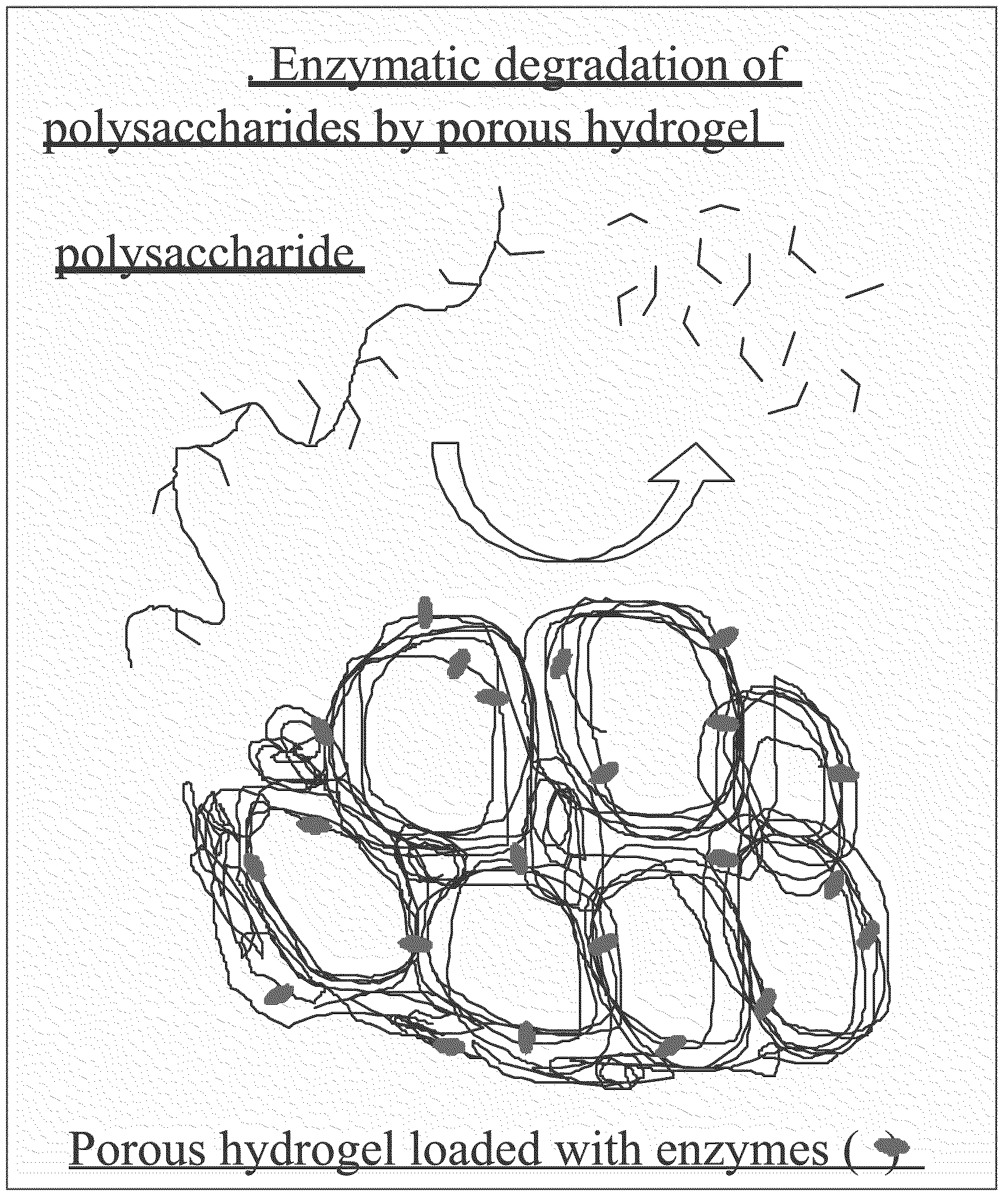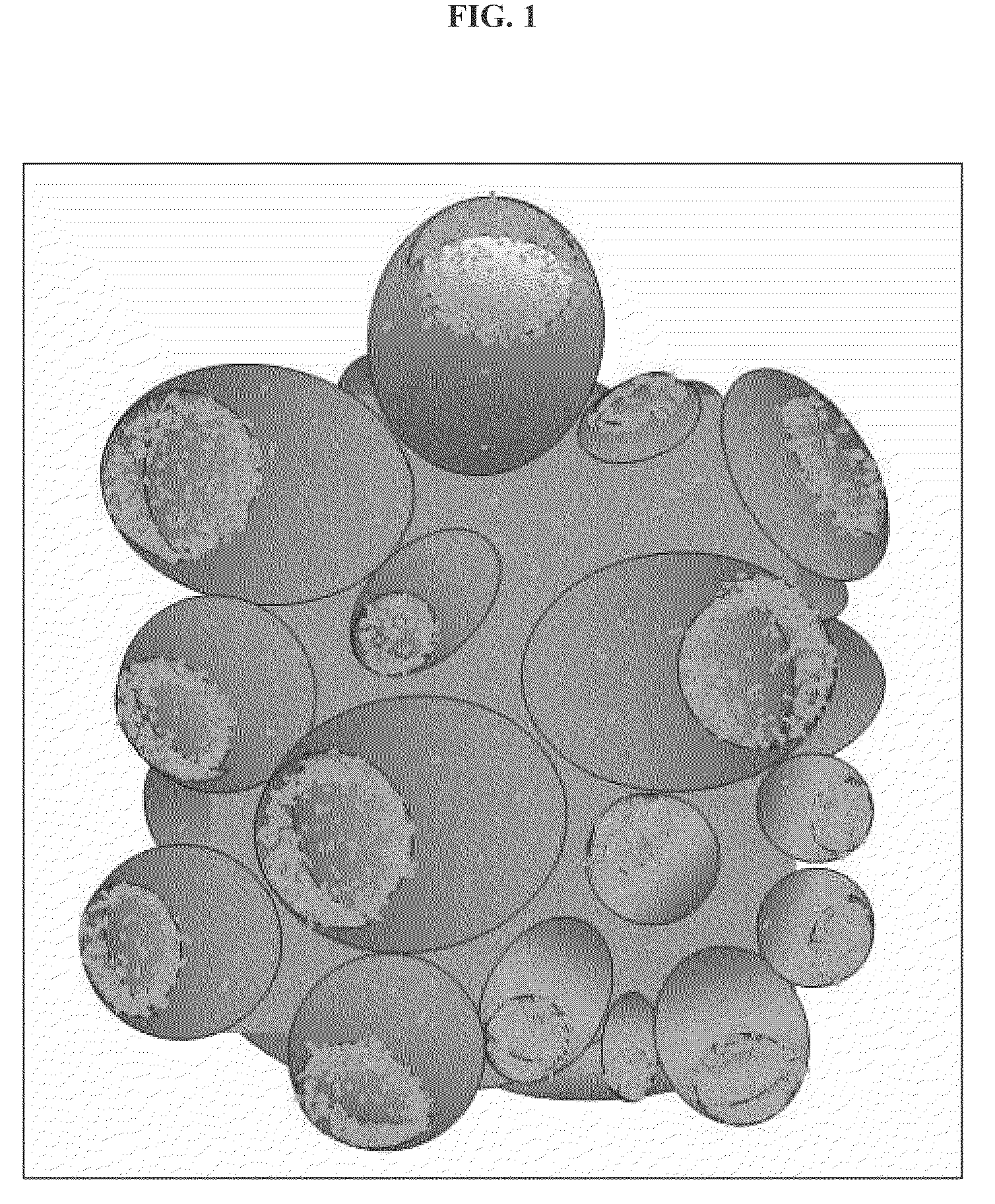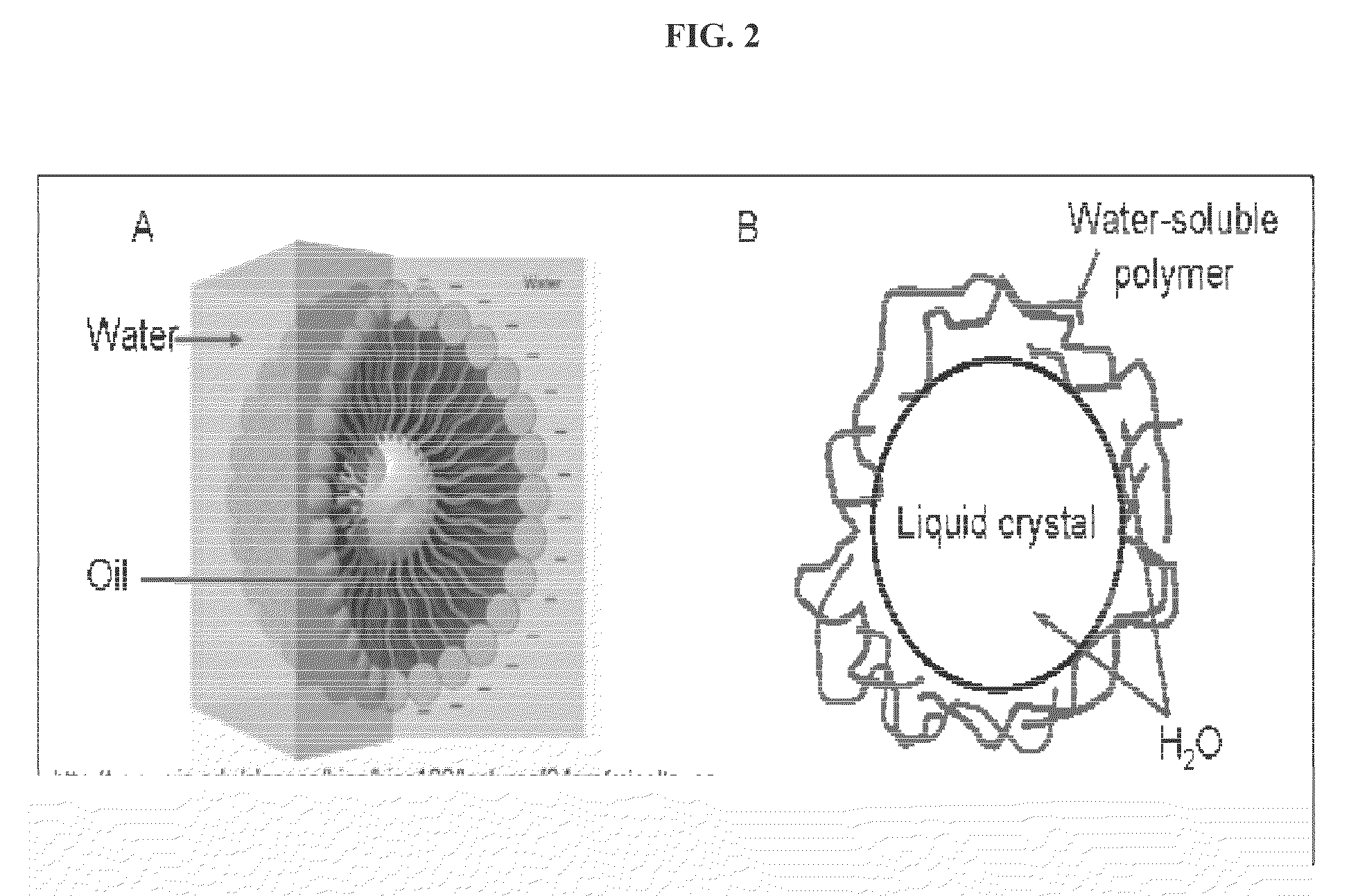Non-amphiphile-based water-in-water emulsion and uses thereof
a technology of water-in-water emulsion and amphiphile, which is applied in the direction of instruments, peptide/protein ingredients, biocide, etc., can solve the problems of inability to control the location of immobilized proteins in materials, less desired methods, and man-made materials with biological functions aimed at potential artificial cells and organs still fall embarrassingly far behind powerful and sophisticated biological machinery such as enzymes
- Summary
- Abstract
- Description
- Claims
- Application Information
AI Technical Summary
Benefits of technology
Problems solved by technology
Method used
Image
Examples
example 1
Water-in-Water Emulsions Stabilized by Non-Amphiphilic Interactions: Polymers Dispersed Lyotropic Liquid Crystals
[0132]Emulsion systems involving surfactants are mainly driven by the separation of the hydrophobic interactions of the aliphatic chains from the hydrophilic interactions of amphiphilic molecules in water. This example describes an emulsion system that does not include amphiphilic molecules, but molecules with functional groups that are completely solvated in water. These functional groups give rise to molecular interactions including hydrogen bonding, π-stacking, and salt bridging, and are segregated into a dispersion of droplets forming a water-in-water emulsion. This water-in-water emulsion consists of dispersing droplets of a water-solvated biocompatible liquid crystal-disodium cromoglycate (DSCG), in a continuous aqueous solution containing specific classes of water-soluble polymers. Whereas aqueous solutions of polyols support the formation of emulsions of spherical...
example 2
[0155]Water-in-Water Emulsion to New Hydrogel
[0156]New colloidal science: water-in-water emulsion of chromonic liquid crystals. The present approach to making biocompatible novel structure involves making protein-laden hydrogel based on a recently discovered water-in-water emulsion (FIG. 8) (Simon, K. A., P. Sejwal, R. B. Gerecht, and Y.-Y. Luk, Water-in-Water Emulsions Stabilized by Non-Amphiphilic Interactions: Polymer-Dispersed Lyotropic Liquid Crystals. Langmuir, 2007. 23(3): p. 1453-1458), where droplets of water-solvated liquid crystal—disodium cromoglycate (DSCG), can be stabilized from coalescence in water by the presence of certain water-soluble polymers (polyacrylamides and polyols). Traditional water-in-water emulsions involve having different biopolymers preferentially partition with its own type and forming different phases in the common solvent-water (Poortinga, A. T., Microcapsules from Self-Assembled Colloidal Particles Using Aqueous Phase-Separated Polymer Solutions...
example 3
Microcapsule Hydrogel
[0159]Because the water-in-water (W / W) emulsion of 5′DSCG differs from known W / W emulsion of biopolymers in that polymer coatings on the liquid crystal droplets are required, it was envisioned that this water-in-water emulsion offers new knowledge in colloidal science, and many new phenomena can be explored. For instance, the general scheme of porous hydrogel formation based on W / W emulsions (FIG. 9) suggests that the density of the polymer is higher on the DSCG droplet than in the bulk solution. Thus, if sufficiently less monomers and cross-linkers is used, the higher concentration of the monomers and crosslinkers close to the droplet surface will be polymerized and crosslinked on the droplets rather than in the bulk. Such selective polymerization should result in a novel core-shell structure of hydrogel material. By decreasing the concentration of monomers (acrylamide) used for making porous hydrogel from 6 wt % to 4 wt % and that of cross-linkers from 0.051 w...
PUM
| Property | Measurement | Unit |
|---|---|---|
| Pore size | aaaaa | aaaaa |
| Pore size | aaaaa | aaaaa |
| Weight | aaaaa | aaaaa |
Abstract
Description
Claims
Application Information
 Login to View More
Login to View More - R&D
- Intellectual Property
- Life Sciences
- Materials
- Tech Scout
- Unparalleled Data Quality
- Higher Quality Content
- 60% Fewer Hallucinations
Browse by: Latest US Patents, China's latest patents, Technical Efficacy Thesaurus, Application Domain, Technology Topic, Popular Technical Reports.
© 2025 PatSnap. All rights reserved.Legal|Privacy policy|Modern Slavery Act Transparency Statement|Sitemap|About US| Contact US: help@patsnap.com



